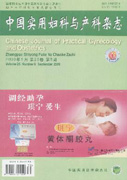|
Clinical treatment of infertility caused by endometrial injury.
SONG Tian-ran,SUN Hai-xiang
2020, 36(6):
500-504.
DOI: 10.19538/j.fk2020060106
The uterus is an essential organ for the establishment and maintenance of pregnancy.Endometrial damage will lead to infertility and recurrent abortion.Intrauterine adhesions are the most common form of endometrial damage.The main purpose of treatment is to restore the shape of the uterine cavity and the integrity and receptivity of the endometrium,so as to improve the outcome of pregnancy.At present,the comprehensive treatment with hysteroscopy as the core is an effective treatment,but the recurrence rate is still very high,especially in the patients with severe intrauterine adhesions.This article reviews the progress in the clinical treatment of infertility caused by intrauterine adhesions.
|

